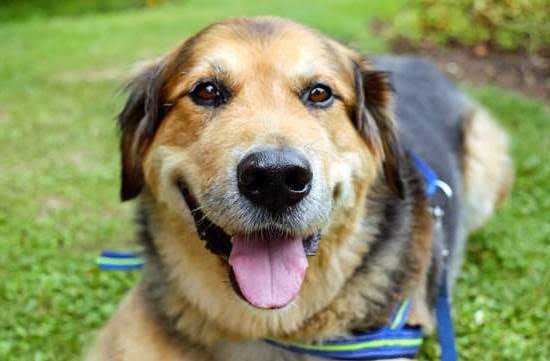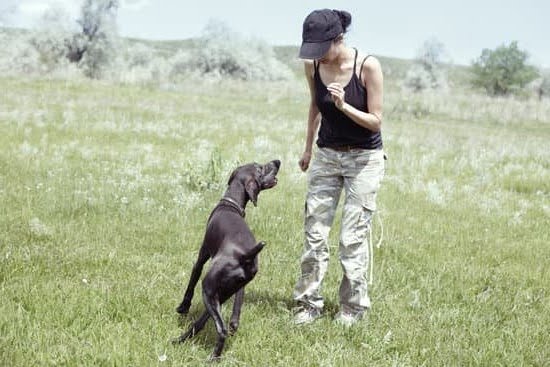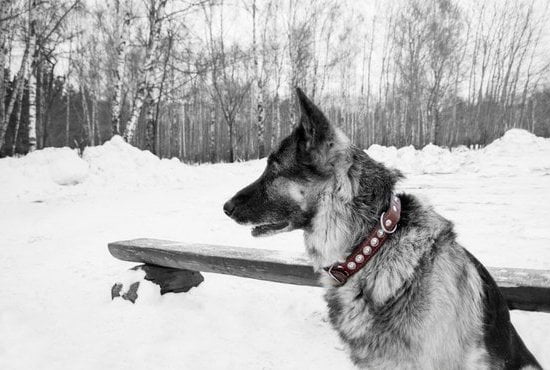Autism service dogs, also known as autism assistance dogs, play a crucial role in supporting individuals with autism spectrum disorder (ASD). These specially trained animals provide companionship, emotional support, and assistance with daily tasks. In this article, we will explore the process of how autism service dogs are trained to fulfill their important roles.
One of the first steps in understanding autism service dogs is recognizing the unique qualities that make them successful in their work. These highly-trained canines possess a combination of intelligence, patience, and empathy, which allows them to form a strong bond with their handlers. They are specifically trained to respond to the specific needs and challenges of individuals with ASD, making them invaluable members of their families.
The selection and training process for potential autism service dogs involves comprehensive assessments to ensure they have the right temperament and aptitude for the role. Once identified, these dogs undergo rigorous basic obedience training, specialized task training related to autism assistance, socialization and public access training. Additionally, their future handlers also receive extensive training and ongoing support to ensure effective communication and partnership between the two.
Qualities of a Successful Autism Service Dog
Autism service dogs require a specific set of qualities and characteristics to effectively assist individuals with autism spectrum disorder. One of the most important qualities is a calm and gentle demeanor, as the dog must remain composed in various situations and surroundings. Additionally, successful autism service dogs should be highly trainable, intelligent, and responsive to commands. This allows them to effectively perform specialized tasks that cater to the unique needs of their handlers.
Another crucial quality of an effective autism service dog is attentiveness. These dogs need to be keenly aware of their handler’s needs, emotions, and behaviors in order to provide appropriate support. Furthermore, they should have a strong bond with their handler, fostering trust and companionship. Lastly, a successful autism service dog should exhibit patience and adaptability when faced with new environments or changes in routine.
In order to ensure that an autism service dog possesses these essential qualities, extensive training and evaluations are conducted throughout the selection and training process. Successful candidates will ultimately demonstrate the ability to fulfill these requirements as they work alongside individuals with autism spectrum disorder.
| Quality | Description |
|---|---|
| Calm and Gentle Demeanor | Remains composed in different situations |
| Highly Trainable & Intelligent | Easily learns specialized tasks for assistance |
| Attentive & Responsive | Aware of handler’s needs and emotions |
| Bonded & Patient |
Selecting and Training a Potential Service Dog
Before a dog can become an autism service dog, it must first be selected and trained for the role. This process involves thorough evaluation and specialized training to ensure that the dog is not only capable of providing assistance, but also well-suited for working with individuals with autism. Here are the key steps involved in selecting and training a potential service dog for autism:
- Evaluation: The selection process begins with evaluating the temperament, behavior, and health of potential candidate dogs. It is essential to choose dogs that are calm, patient, friendly, and have the ability to focus on their handler.
- Breed Selection: Certain breeds are better suited for this type of work due to their characteristics. Some commonly chosen breeds for autism service dogs include Golden Retrievers, Labradors, Poodles, and mixes of these breeds.
- Training Program: Once a suitable candidate is selected, it undergoes a rigorous training program that focuses on basic obedience as well as specialized tasks tailored to meet the needs of individuals with autism.
The training process for a potential autism service dog is comprehensive and designed to ensure that the dog is equipped to provide valuable support to its handler. Through careful selection and purposeful training, these remarkable animals are able to make a positive impact in the lives of individuals with autism.
Basic Obedience Training
Commands and Behaviors
During basic obedience training, autism service dogs are taught foundational commands such as sit, stay, come, heel, and down. These commands are crucial for maintaining control over the dog in various situations and environments. In addition to commands, the dogs are also trained to exhibit appropriate behaviors such as walking politely on a leash, not jumping on people, and remaining calm in public settings.
Positive Reinforcement
Trainers use positive reinforcement techniques during basic obedience training to encourage desired behaviors from the dogs. This involves rewarding the dog with treats, toys, or praise when they successfully carry out a command or behavior. Consistent positive reinforcement helps to establish trust between the dog and their handler while also making learning enjoyable for the animal.
Patience and Consistency
Basic obedience training requires patience and consistency from both the trainer and handler. Dogs may not learn new commands or behaviors immediately, so it is important for trainers to be patient and provide ample opportunities for the dog to understand what is expected of them. Likewise, handlers must remain consistent in practicing commands with their dogs to reinforce learning and ensure continued obedience over time.
By mastering basic obedience skills through structured training, autism service dogs are better prepared to assist individuals with autism in their daily lives, providing both practical support and companionship.
Specialized Tasks for Autism Assistance
Autism service dogs play a critical role in providing support and assistance to individuals with autism spectrum disorder (ASD). These specially trained dogs are able to perform a variety of tasks to help their handlers navigate the challenges of daily life. Here are some of the specialized tasks that autism service dogs are trained to perform:
- Tracking and Finding: Autism service dogs are often trained to track and find individuals who may wander or become lost, providing peace of mind for caregivers and ensuring the safety of the individual with autism.
- Interrupting Harmful Behaviors: Service dogs can be trained to interrupt harmful or self-injurious behaviors by gently nudging or pawing at their handlers, helping to redirect their focus and prevent potential harm.
- Sensory Support: Many individuals with autism have sensory sensitivities, and service dogs can provide comfort and support by applying pressure through gentle leaning or laying on their handlers during times of distress.
In addition to these specialized tasks, autism service dogs also offer emotional support, companionship, and a sense of security for individuals with ASD. The unique bond between a person with autism and their service dog can have a profound impact on their quality of life, providing both practical assistance and emotional comfort.
Overall, the specialized tasks performed by autism service dogs contribute significantly to the well-being and independence of individuals with ASD. These highly trained animals make a meaningful difference in the lives of those they serve, enhancing their ability to navigate daily challenges and engage more fully in community life.
Socialization and Public Access Training
During socialization training, autism service dogs are gradually introduced to new experiences while ensuring they remain calm and focused. This may include exposure to loud noises, crowded areas, different floor surfaces, and unfamiliar smells.
The goal is to desensitize the dog to these stimuli so that they are not easily overwhelmed or distracted when out in public with their handler. Additionally, socialization helps the dog develop positive associations with different environments and people, making them more confident and adaptable in various situations.
Public access training is equally important as it teaches autism service dogs how to conduct themselves appropriately in public spaces. They must learn to remain calm and focused while ignoring distractions, follow commands from their handler without hesitation, and exhibit good manners around people.
Trainers work on refining the dog’s behavior by reinforcing obedience commands such as sitting or staying still when necessary and walking calmly on a leash without pulling. This ensures that the service dog can accompany their handler in public places without causing disruptions or becoming distressed.
Handler Training and Support
Understanding the Role of the Handler
The handler of an autism service dog plays a crucial role in ensuring the successful integration of the dog into their daily life. It is important for the handler to understand how to effectively communicate with the dog, reinforce positive behaviors, and manage any challenging situations that may arise.
Handlers are trained to work closely with their service dogs to maximize the benefits of having a canine companion that can help them navigate their unique needs and challenges related to autism.
Training Programs for Handlers
In addition to training the service dogs, it is equally important for handlers to receive proper training and support. Many organizations that provide autism service dogs also offer programs for handlers, which may include workshops, individual coaching sessions, and online resources.
These programs aim to educate handlers about handling techniques, legal rights related to service dogs, and ongoing care for their canine partner. By equipping handlers with the necessary knowledge and skills, they can better advocate for themselves and their assistance dog in various settings.
Support Networks for Handlers
Living with autism can present unique challenges, and having an autism service dog can significantly improve the quality of life for individuals. Therefore, it is essential for handlers to have access to a supportive network where they can connect with other handlers facing similar experiences.
This support system provides a space for sharing advice, seeking guidance during difficult times, and celebrating successes together. Additionally, ongoing support from trainers and professionals within the organization ensures that handlers feel empowered to effectively utilize their canine partner as they navigate everyday life challenges associated with autism.
Ongoing Support and Care for Autism Service Dogs
In conclusion, the ongoing support and care for autism service dogs is crucial in ensuring that they continue to provide assistance to individuals with autism. Once a service dog has completed its training and is placed with a handler, it is important for the organization that provided the dog to offer continued support. This includes regular check-ins, access to resources and guidance for any issues that may arise.
Furthermore, the care of autism service dogs is also essential for their well-being. Handlers must ensure that their service dogs receive regular veterinary care, proper nutrition, exercise, and grooming. Additionally, providing a loving and nurturing home environment is key in maintaining the bond between the handler and the service dog.
Ultimately, ongoing support and care for autism service dogs contribute to their ability to continue effectively assisting individuals with autism. With proper support and care, these remarkable animals can greatly improve the quality of life for those living with autism spectrum disorder. It is important for both handlers and organizations to recognize the significance of ongoing support in order to maximize the impact of these incredible service dogs.
Frequently Asked Questions
What Do You Teach an Autism Service Dog?
Autism service dogs are trained to provide support and assistance to individuals with autism spectrum disorder. They are taught to help their handlers navigate social situations, manage sensory overload, and provide companionship. These dogs can also be trained to interrupt repetitive behaviors and serve as a calming presence during stressful situations.
What Training Method Is Used for Service Dogs?
The training method used for service dogs, including those for individuals with autism, typically involves positive reinforcement techniques. This means that the dogs are rewarded for exhibiting the desired behaviors through treats, praise, or other forms of reinforcement. Training may also involve repetition, consistency, and patience in teaching the necessary skills and tasks.
Is There Science Behind That Autism Service Dogs?
There is scientific evidence supporting the benefits of autism service dogs for individuals on the autism spectrum. Research has shown that these specially trained dogs can help reduce stress and anxiety, improve social interactions, and enhance overall quality of life for their handlers.
Studies have also documented improvements in emotional regulation and behavioral outcomes in individuals with autism who have been paired with an autism service dog.

Welcome to the blog! I am a professional dog trainer and have been working with dogs for many years. In this blog, I will be discussing various topics related to dog training, including tips, tricks, and advice. I hope you find this information helpful and informative. Thanks for reading!





